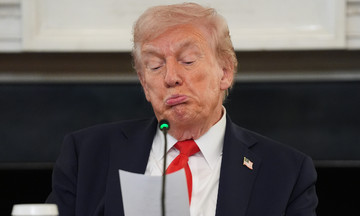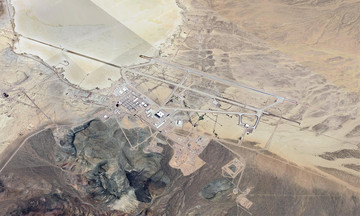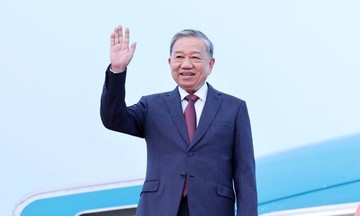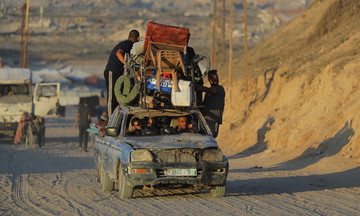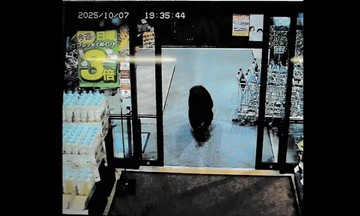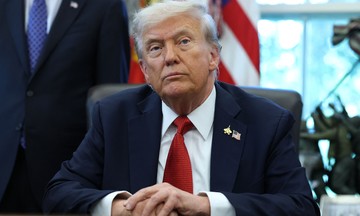On 18/9/2024, White House Press Secretary Karoline Leavitt reported that Marine One, carrying then-President Donald Trump, experienced a "minor hydraulic system issue" while flying from the British Prime Minister's residence at Chequers to Stansted Airport in London.
Prioritizing safety, the Marine One crew diverted to nearby Luton Airport. President Trump and First Lady Melania transferred to a backup helicopter to continue their journey. They then landed at London Stansted Airport and boarded Air Force One to return to the US without further incident.
Aviationist reported that the helicopter involved was one of three VH-3D Sea Kings deployed to the UK for President Trump's visit.
The VH-3D is the only Sea King variant still active in the US military, with the aircraft having been delivered decades ago. Despite their age, these helicopters are meticulously maintained, have low flight hours, and are considered reliable.
The US military began using helicopters in the 1940s. However, safety concerns led the US Secret Service to initially advise against their use for presidential transport. This policy changed in the 1950s due to escalating Cold War tensions and the increased risk of nuclear war, which necessitated emergency evacuation plans for US leaders.
The military selected the Bell H-13J for presidential transport due to its strong safety record. This relatively small and slow aircraft could accommodate only a pilot and two passengers. In July 1957, during "Operation Alert," Dwight Eisenhower became the first US president to travel by helicopter.
Helicopters quickly became essential for US presidents, both domestically and internationally. The Bell H-13J was soon replaced by larger models. The US Army and Marine Corps alternated providing helicopters for the president, while the Air Force operated Air Force One.
This arrangement continued until 1976, when the Marine Corps became solely responsible for operating the presidential helicopter. They designated any helicopter carrying the president as "Marine One" to avoid confusion with other aircraft.
Marine Helicopter Squadron One (HMX-1) is responsible for helicopter transport of the president, vice president, and other high-ranking officials.
Deliveries of the VH-3D to HMX-1 began in December 1974, fully replacing the older VH-3A by the end of 1976. While the VH-60N joined the HMX-1 fleet in the 1980s, the VH-3D has remained the primary presidential helicopter.
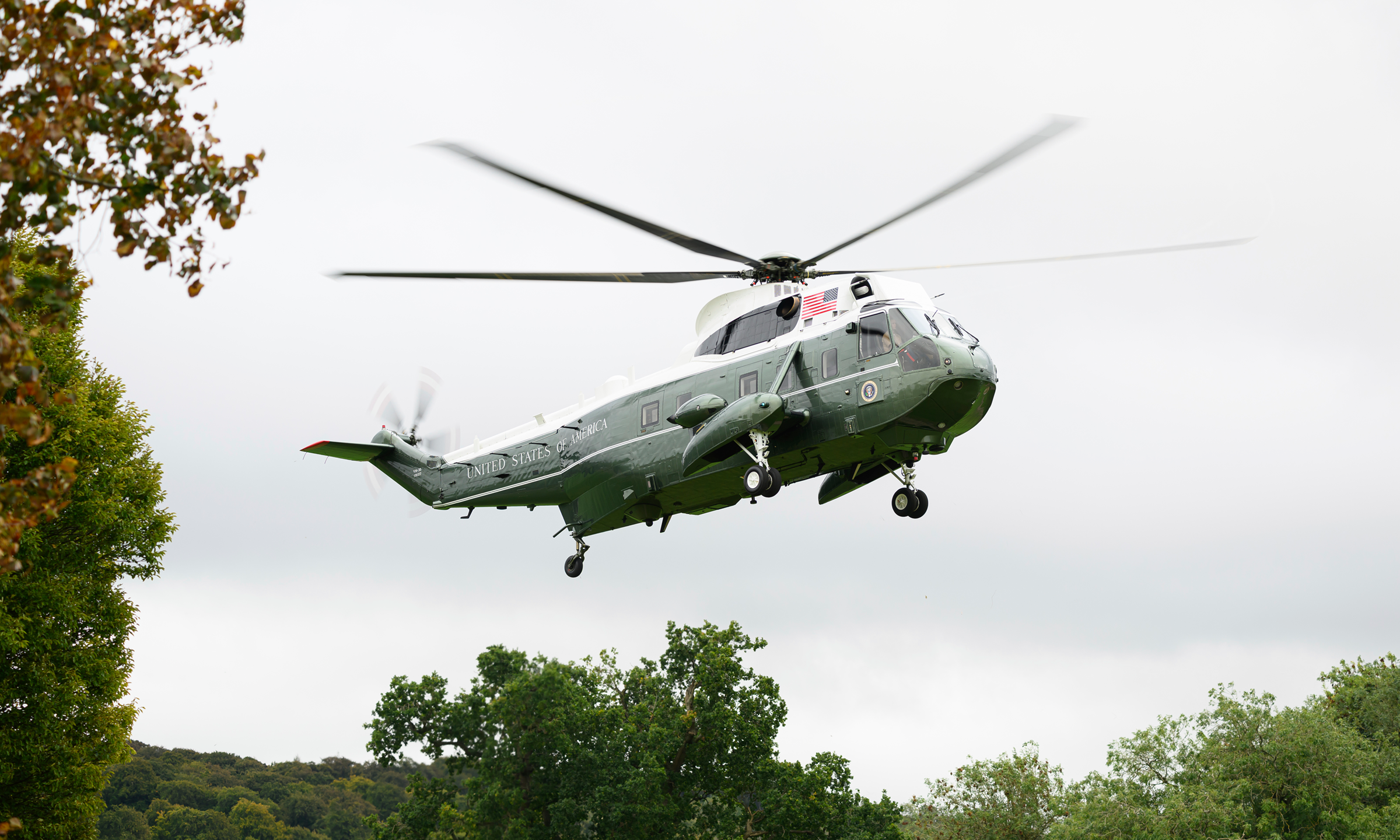 |
A VH-3D Sea King serving as Marine One at Chequers, UK, on 18/9. Photo: AP |
The VH-3D is 21.9 m long, 5.1 m high, has a maximum takeoff weight of 9.7 tons, and is powered by two T58-GE-400B turbine engines. It has a top speed of approximately 260 km/h and a range of about 1,000 km.
Capable of day and night operations in all weather conditions, the VH-3D is equipped with independent navigation systems, GPS, secure and non-secure communication equipment, and electromagnetic pulse protection.
While unarmed, the VH-3D features countermeasures such as flares, chaff, the AN/ALQ-144A active infrared jammer, and armor plating.
It also has shock-absorbing landing gear and self-sealing fuel tanks to prevent fires and minimize damage in the event of an accident or enemy fire. The VH-3D Sea King can carry 14 passengers, three more than the VH-60N.
For maximum security, Marine One always flies in a formation of up to five identical helicopters. One carries the president, while the others serve as decoys. They constantly change positions in flight to conceal the actual Marine One.
Despite being in service for over 50 years, the VH-3D Sea King remains reliable due to meticulous maintenance and low flight hours.
"These helicopters are isolated inside high-security maintenance hangars at HMX-1's base. They receive exceptional care and more frequent inspections than most helicopters in service. They also undergo continuous upgrades to mitigate the effects of aging," said Tyler Rogoway, a commentator for the US military website War Zone.
The US plans to retire the VH-3D in 2026, replacing it with the newer VH-92A Patriot. The Patriot program, launched in 2014, is based on a militarized version of the Sikorsky S-92 multi-purpose transport helicopter. In 2015, 23 aircraft were ordered for 4.7 billion USD, equivalent to over 6 billion USD today.
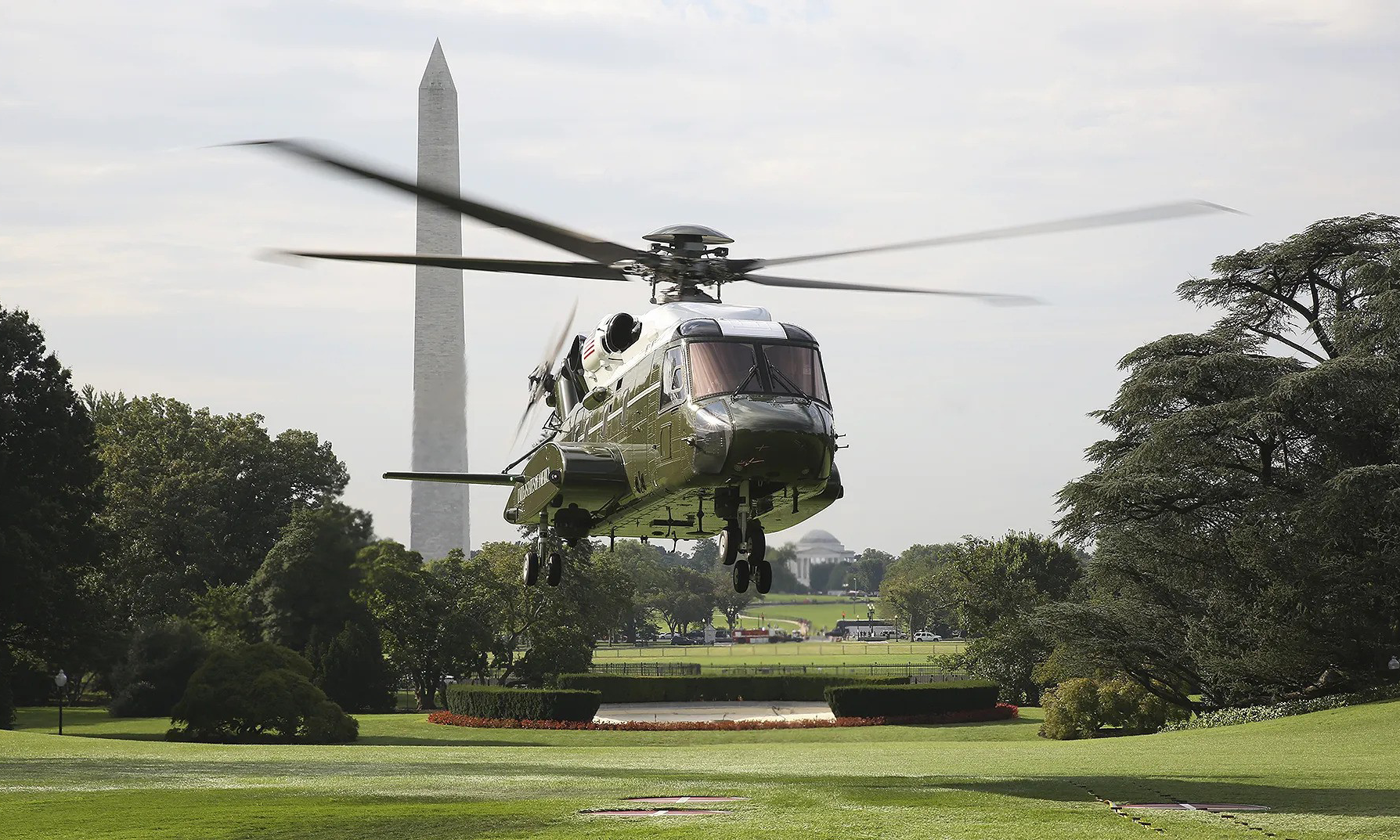 |
A VH-92A lands at the White House in 2018. Photo: US Marine |
However, this plan may change due to technical issues with the VH-92A. Norman Polmar, a military expert who led major projects for the US Department of Defense and Navy, reported last year that after its first test flight, the VH-92A failed to meet reliability, availability, and maintainability standards.
A 2020 report by the US Government Accountability Office (GAO) revealed that the VH-92A's heat exhaust could damage landing surfaces, including the South Lawn of the White House, where Marine One typically lands to pick up the president.
The VH-92A first served as Marine One on 19/8/2024, carrying then-President Joe Biden from O'Hare International Airport in Chicago to Soldier Field for the Democratic National Convention.
Pham Giang (According to War Zone, USNI, Aviationist)




